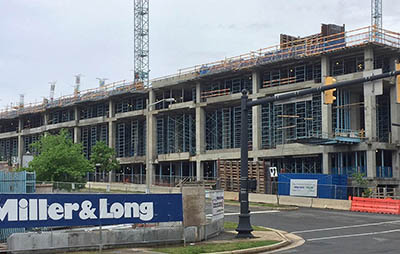
December Construction Spending Down 0.4%

The Census Bureau on Wednesday said December construction spending fell by 0.4 percent, with overall residential spending falling for the seventh straight month.
The report said overall construction spending cam in at an estimated seasonally adjusted annual rate of $1,809.8 billion, 0.4 percent lower than the revised November estimate of $1,817.3 billion. However, the December figure is 7.7 percent higher than a year ago ($1,681.0 billion). The value of construction in 2022 rose to $1,792.9 billion, 10.2 percent (±0.8 percent) above the $1,626.4 billion spent in 2021.
Spending on private construction fell to a seasonally adjusted annual rate of $1,427.1 billion, 0.4 percent below the revised November estimate of $1,432.9 billion. Residential construction fell to a seasonally adjusted annual rate of $857.2 billion in December, 0.3 percent below the revised November estimate of $860.0 billion.
Nonresidential construction fell to a seasonally adjusted annual rate of $570.0 billion in December, 0.5 percent below the revised November estimate of $572.9 billion. The value of private construction in 2022 rose to $1,429.2 billion, 11.7 percent above the $1,279.5 billion spent in 2021. Residential construction in 2022 rose to $899.1 billion, 13.3 percent above the 2021 figure of $793.7 billion; nonresidential construction rose to $530.1 billion, 9.1 percent above the $485.8 billion in 2021.
“The monthly weakness was once again on the single-family side, with outlays falling by 2.3%,” said Charlie Dougherty, Economist with Wells Fargo Economics, Charlotte, N.C. A move lower in mortgage rates over the past few weeks appears be lifting the spirits of home builders. That noted, single-family permits continue to trend lower, which suggests more spending declines are on the horizon. On the other hand, multifamily (3.2%) and home improvement (0.7%) outlays rose solidly in December. The monthly rise in multifamily spending reflects the still-strong pace of apartment and condo construction despite softening demand and slowing rent growth.”
